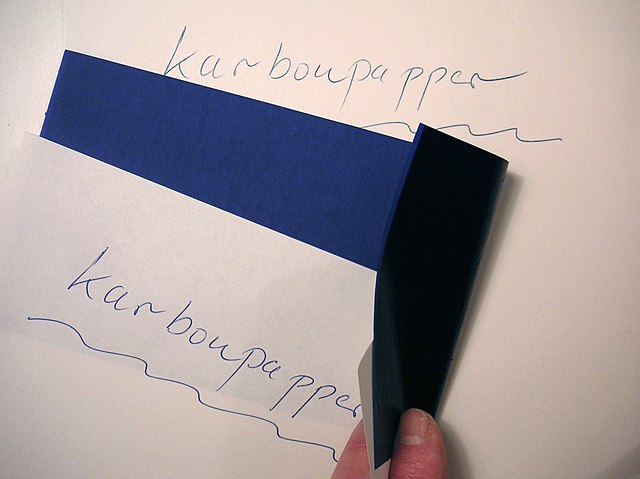Before the development of photographic copiers, a carbon copy was the under-copy of a typed or written document placed over carbon paper and the under-copy sheet itself. When copies of business letters were so produced, it was customary to use the acronym "CC" or "cc" before a colon and below the writer's signature to inform the principal recipient that carbon copies had been made and distributed to the parties listed after the colon. With the advent of word processors and e-mail, "cc" is used as a merely formal indication of the distribution of letters to secondary recipients.
A copy made with carbon paper
As creating carbon copies requires relatively few resources, it became a common method for producing underground and clandestine newspapers, as seen in this French example from World War II.
Typed carbon copy letter from 1919, with stamp reading "A true copy of the signed original."
Menu for the Blackpool Tower Café Restaurant, with daily specials (in blue) carbon copied, early 20th century.
Carbon paper consists of sheets of paper that create one or more copies simultaneously with the creation of an original document when inscribed by a typewriter or ballpoint pen. The email term cc which means ‘carbon copy’ is derived from carbon paper.
A sheet of carbon paper, with the coating side down
Handwriting duplicated through carbon paper





